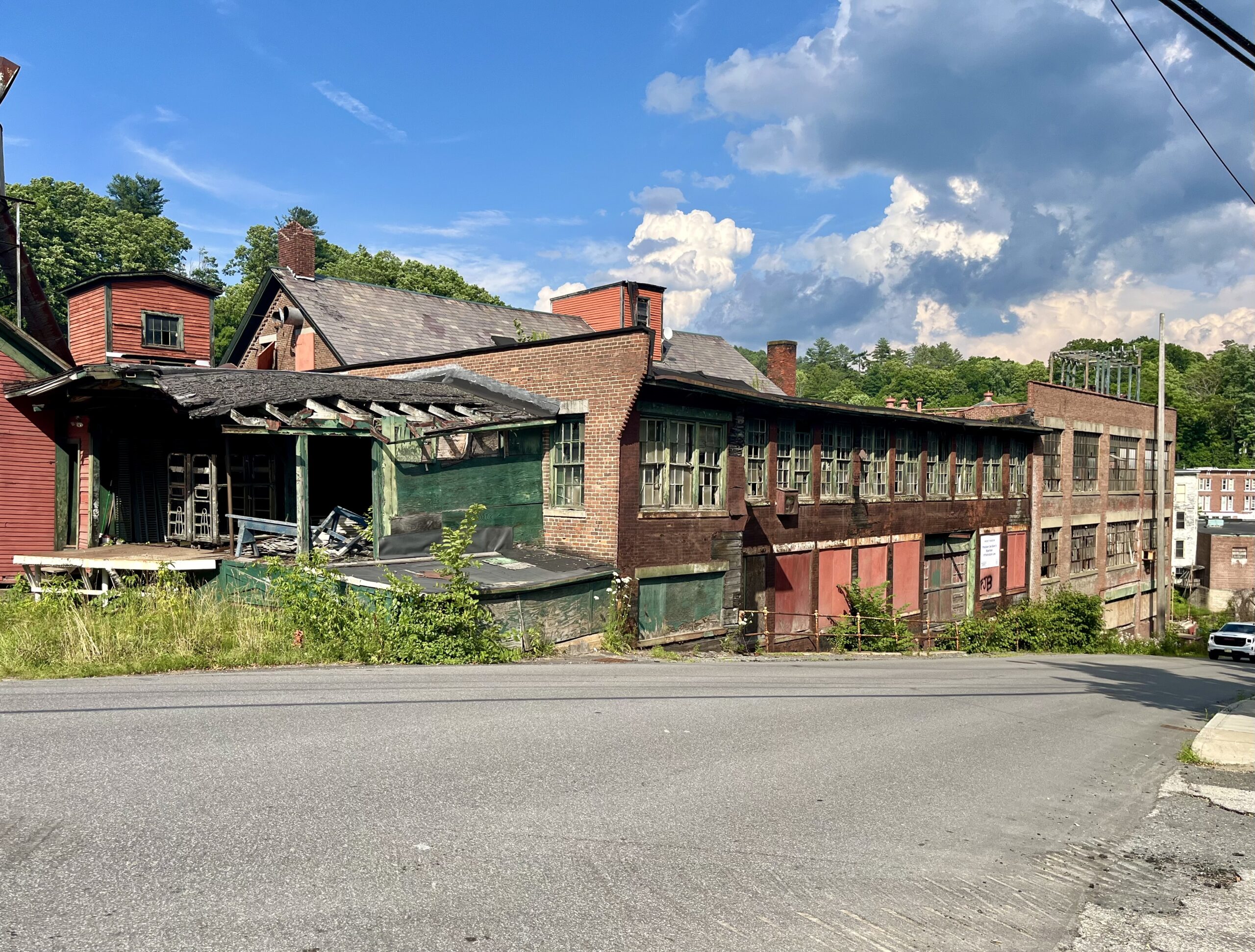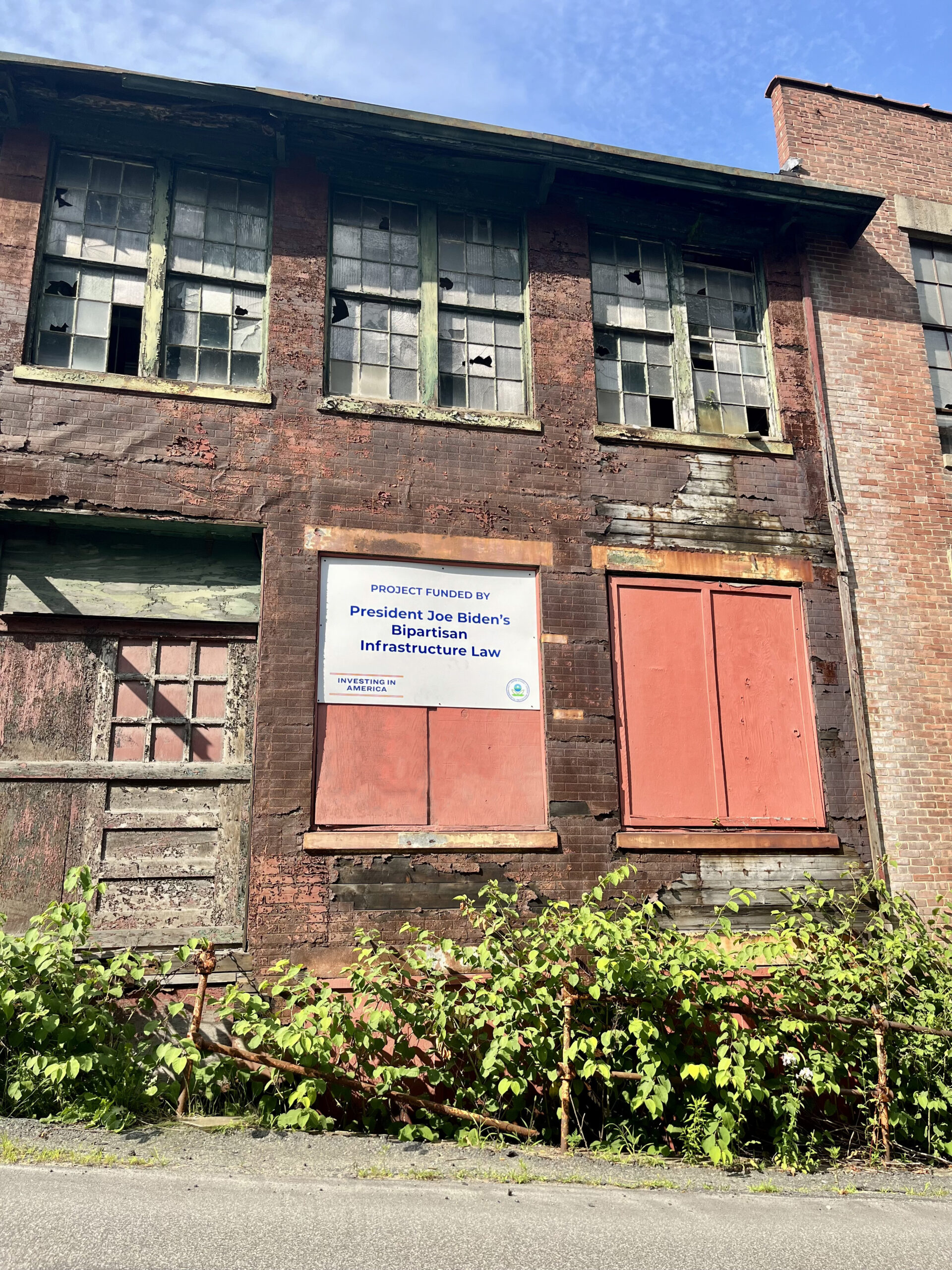
SPRINGFIELD, Vt. – In a joint effort between the Springfield Regional Development Corporation (SRDC) and the Mount Ascutney Regional Commission (MARC), an environmental assessment effort has been ongoing at 33 Park Street, the historic site of the former Parks & Woolson Machine Company, manufacturer of textile finishing equipment.
Originally constructed in 1826 as a three-story, gable roofed, wood-frame building, with additions built in 1877, 1910, and 1914, the structure along the Black River has fallen into disrepair since Parks & Woolson ceased production in 2003. The oldest existing manufacturing plant, as well as the last major mill to remain operational in Springfield, the property has been designated as a “brownfield,” a site contaminated due to past industrial use.
The future of the old mill, now a dilapidated eyesore and public safety concern, is still uncertain, but after the SRDC acquired the property last year utilizing funds from the Bipartisan Infrastructure Investment and Jobs Act, the land could find a renewed purpose.
The historic legislation, signed into law by President Biden in November 2021, generated a substantial investment in America’s infrastructure. By funding expanded access to clean drinking water and high-speed internet, the repair of aging roads and bridges, and investing in the elimination of polluted brownfield sites, towns like Springfield can reclaim these locations and repurpose them for use by the town.

After an investigation completed this past winter showed significant contamination, an environmental consultant was tasked with drafting a work plan, which was submitted to the state and the Environmental Protection Agency (EPA) for approval.
Executive director of the SRDC Bob Flint is coordinating with MARC to remove contaminants that are of immediate concern, such as barrels containing oils or chemicals. Two rounds of disposal have already taken place, and further efforts will be underway “in the near future.”
Flint explained that samples taken this month will be tested and, as more information is forthcoming, the town will retain a structural engineer to determine the building’s current condition, and to act as consultant on discussions between the SRDC, MARC, and the Vermont Division of Historic Preservation. Each step will require state and EPA approval, and it will likely be 2025 before there can be any determination of redevelopment for the site.
“That, in turn, will inform the development of a Corrective Action Plan (CAP) for the site – how it’s going to be cleaned up/torn down or redeveloped – or something in between,” Flint outlined.
33 Park Street was originally included in the 2017 Main Street Master Plan as part of Springfield’s downtown revitalization initiative to repurpose aging structures, as was done with The Woolson Block, a housing project completed in 2021. The project successfully converted a nearby 150-year-old historic Main Street property into a mixed-use space of apartments, commercial storefronts, and a transitional housing program supporting unhoused and at-risk young adults.
An update posted on the SRDC website states, “The former Parks & Woolson facility is one of Springfield’s most historic manufacturing facilities and is an iconic building, along the Black River. While it’s too early to tell, we hope it can have a second life as part of our community’s downtown.”